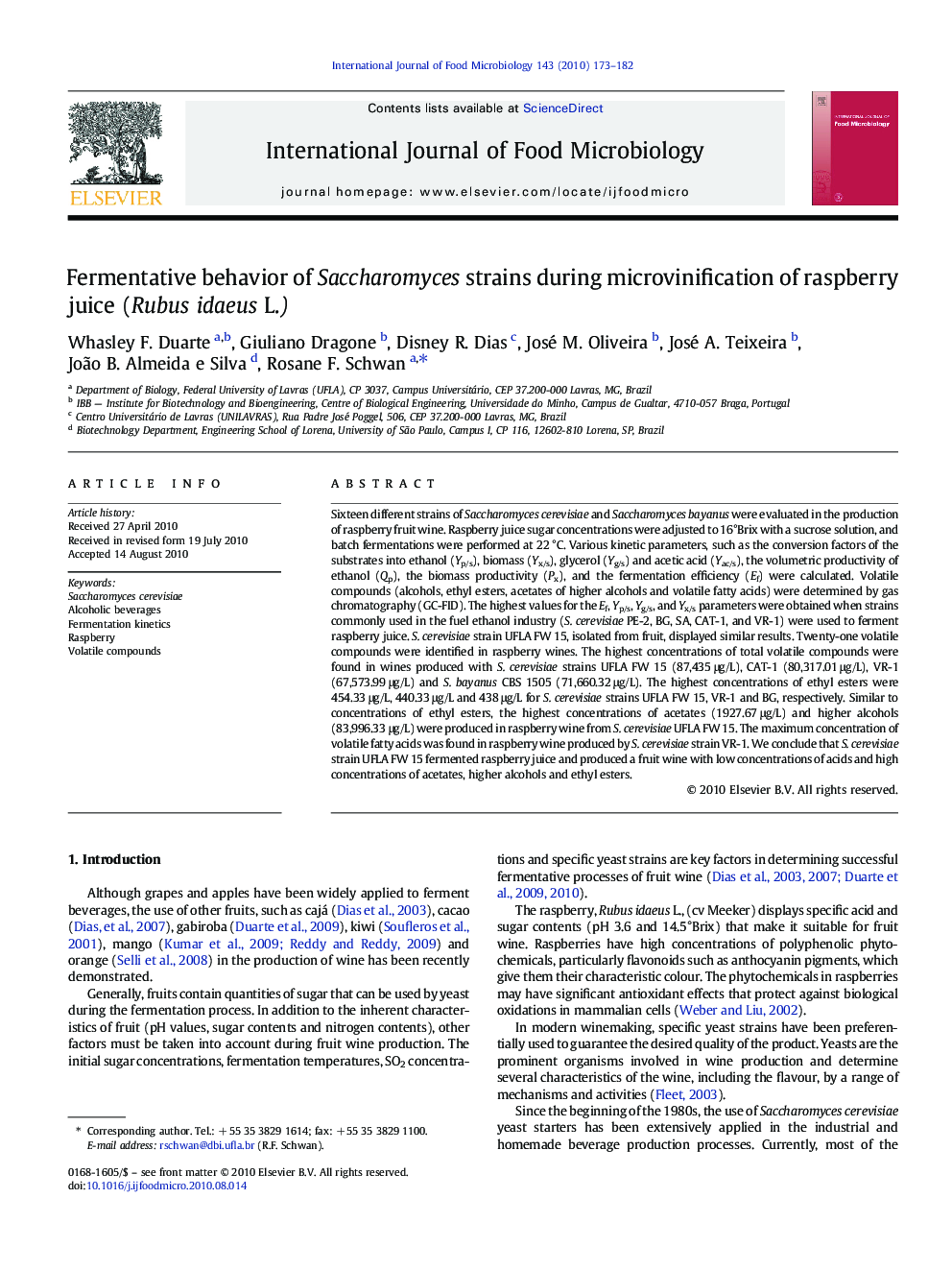| Article ID | Journal | Published Year | Pages | File Type |
|---|---|---|---|---|
| 4368874 | International Journal of Food Microbiology | 2010 | 10 Pages |
Sixteen different strains of Saccharomyces cerevisiae and Saccharomyces bayanus were evaluated in the production of raspberry fruit wine. Raspberry juice sugar concentrations were adjusted to 16°Brix with a sucrose solution, and batch fermentations were performed at 22 °C. Various kinetic parameters, such as the conversion factors of the substrates into ethanol (Yp/s), biomass (Yx/s), glycerol (Yg/s) and acetic acid (Yac/s), the volumetric productivity of ethanol (Qp), the biomass productivity (Px), and the fermentation efficiency (Ef) were calculated. Volatile compounds (alcohols, ethyl esters, acetates of higher alcohols and volatile fatty acids) were determined by gas chromatography (GC-FID). The highest values for the Ef, Yp/s, Yg/s, and Yx/s parameters were obtained when strains commonly used in the fuel ethanol industry (S. cerevisiae PE-2, BG, SA, CAT-1, and VR-1) were used to ferment raspberry juice. S. cerevisiae strain UFLA FW 15, isolated from fruit, displayed similar results. Twenty-one volatile compounds were identified in raspberry wines. The highest concentrations of total volatile compounds were found in wines produced with S. cerevisiae strains UFLA FW 15 (87,435 μg/L), CAT-1 (80,317.01 μg/L), VR-1 (67,573.99 μg/L) and S. bayanus CBS 1505 (71,660.32 μg/L). The highest concentrations of ethyl esters were 454.33 μg/L, 440.33 μg/L and 438 μg/L for S. cerevisiae strains UFLA FW 15, VR-1 and BG, respectively. Similar to concentrations of ethyl esters, the highest concentrations of acetates (1927.67 μg/L) and higher alcohols (83,996.33 μg/L) were produced in raspberry wine from S. cerevisiae UFLA FW 15. The maximum concentration of volatile fatty acids was found in raspberry wine produced by S. cerevisiae strain VR-1. We conclude that S. cerevisiae strain UFLA FW 15 fermented raspberry juice and produced a fruit wine with low concentrations of acids and high concentrations of acetates, higher alcohols and ethyl esters.
